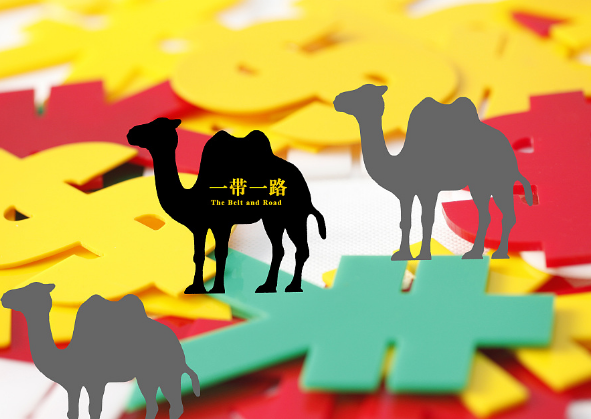BEIJING, Jan. 18 (Xinhua) -- The past 2018 marked the fifth anniversary of the Belt and Road Initiative (BRI) proposed by China. Over the years, the whole world has witnessed the growing consensus surrounding the BRI, with remarkable progress in the policy coordination, facilities connectivity, unimpeded trade, financial integration and people-to-people bond.
Three trends of China's outbound investment under the BRI in 2019 are expected to help investors gain the first-mover advantage in fixing the investment plans or adjusting the business strategies.
First, promoting dev. of real economy, a key consideration for outbound investment
If investors are looking for the Chinese investors to invest in their project, they should bear in mind the key question whether it is conducive to the development of China's real economy.
In 2018, Chinese authorities have unveiled a series of policies to guide healthy development and fine management of the domestic enterprises' mergers and acquisitions (M&A) overseas.
According to Morning Whistle report, in 2018, the advanced manufacturing and technology sectors led by manufacturing, TMT (Technology, Media, Telecom), and medical health remained the hot M&A sectors of the Chinese enterprises, with the proportion of the M&A deals in the above three sectors standing at 15.85 percent, 15.65 percent and 10.98 percent, respectively.
For example, in 2018, China Three Gorges launched a bid for utility company EDP in Portugal, with the transaction of 9.1 billion euros and the Chinese car company Geely took over a 9.69 percent stake in Daimler AG for 9 billion U.S. dollars and became the largest single shareholder of Daimler.
In 2018, the Chinese-funded enterprises initiated a total of 122 investment M&A transactions along the B&R routes, up 10.91 percent year on year. The number of these transactions along the routes accounted for 24.80 percent of the Chinese-funded enterprises' total overseas M&A transactions, up 5 percentage points from 2017, indicating that the B&R countries and regions have become increasingly prominent for China's overseas investment, said the Morning Whistle report.
According to the latest data of the Ministry of Commerce (MOC), Chinese enterprises' non-financial investments in 56 countries along the Belt and Road routes amounted to 12.96 billion U.S. dollars in the first 11 months of 2018, up 4.8 percent year on year and accounting for 12.4 percent of the total outbound investment during the period. The investments mainly went to countries such as Singapore, Laos, Pakistan, Indonesia, Vietnam, Malaysia, Thailand and Cambodia.
Second, infrastructure, trade and greenfield investment, main mode of cooperation
Over the past five years, China has joined hands with relevant countries to promote the unimpeded trade, facility connectivity and financial integration and provide new driving forces for the economic recovery and sustainable development of the countries along the routes, even the whole world.
It is worth noting that infrastructure, trade and greenfield investment will be the main mode of cooperation for Chinese enterprises in the B&R countries in the coming years.
At present, outbound investment has become an important way for the Chinese enterprises to promote the construction of the Belt and Road, get themselves deeply involved in the international division of labor and resource allocation, and help optimize resources allocation.
Analysts point out that the industrial and technological advantages of the Chinese enterprises in railways, power, communications and infrastructure sectors are exactly complementary to the resource advantages and market demands of the countries along the routes, which has enabled the Chinese enterprises to find plenty of opportunities in the changing international environment. Given that, China's investments along the routes are expected to continuously increase.
Third, inevitable internationalization of financing and supply chain
As China accelerates its integration into global competition, internationalization is of great significance to the Chinese enterprises. With the further internationalization of the Chinese enterprises, the internationalization of the financing and supply chain will be an inevitable trend.
The internationalization of supply chain requires enterprises to extend the supply chain system to the whole world for planning, coordination, operation, control and optimization to meet the needs of global customers. The same is also true for the enterprises' financing on a global scale. The internationalization of financing also helps the enterprises solve the problem such as insufficient funds in the process of their internationalization.
For example, many banks have successfully issued the B&R bonds at home and abroad.
Meanwhile, the B&R has also promoted the internationalization of the RMB and the internationalization of RMB has further facilitated China's foreign trade and investment.
In early 2018, Pakistan approved the use of RMB as a settlement currency in bilateral trade with China, implying that RMB is expected to become the settlement currency for project transactions under the framework of the China-Pakistan Economic Corridor.
Since the beginning of 2018, a lot of B&R countries have extended currency swap deals with China. So far, China has launched bilateral currency swaps with over 30 countries and regions in total, most of which are B&R countries. (Edited by Hu Pingchao, hupingchao@xinhua.org)




 A single purchase
A single purchase









